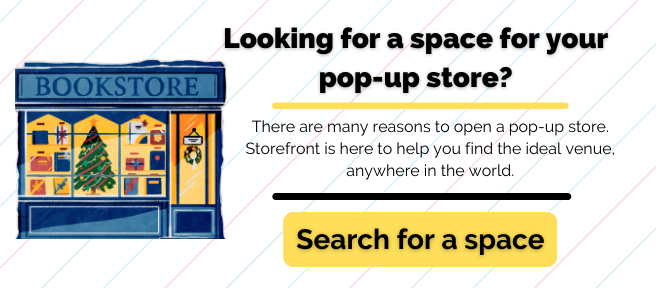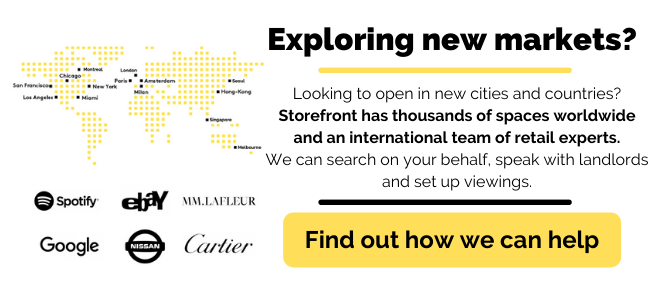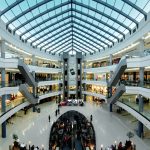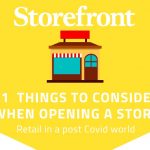When it comes to retail, 2020 was a strange year. The impact of Covid-19 was far reaching and significant.
Retail, like many industries, was severely disrupted as consumers were stuck at home, shops were forced to close and strict restrictions applied across the globe.
While we have by no means seen the back of Covid-19, there is a general consensus that with the continued progress being made towards vaccines, we are at least on the path to normality.
However, the impact of Covid-19 will not be fleeting. The ‘return to normal’ will not be a return to exactly what it was like before. Many of the changes we have seen in retail will have a lasting impact.
What follows is a brief peek into the future as we discuss some of the retail trends we expect to see this year in the aftermath of the global pandemic.

1. Continued blurring of the lines between online and offline commerce
It is no secret that physical and digital retail have been getting closer and closer over recent years. Gone are the days of digital and physical being seen as competing against one another. Both have strengths that the other simply cannot match. What we’ve been seeing is a gradual merging of both.
This concept of ‘phygital retail’ isn’t new and it hasn’t been caused by Covid-19. What 2021 holds for consumers and retailers is an increased velocity of phygital strategies. Covid-19 has acted as a catalyst for many of the changes we were already seeing.
Consumer behaviour and, more importantly, consumer expectations, have been accelerated by lockdown. What’s more, the older, less digitally savvy brands are those that are struggling the most. This means the brands that embrace a phygital approach and deliver what their customers want and expect will succeed in 2021.
We expect to see a greater focus on ‘convert on any channel’ retail where the physical supports the digital and vice versa. There are few better exemplars of this than pop-up stores and short-term campaigns.
For more on phygital retail and its implications check out What is Phygital Retail? Physical and digital retail, together
2. Existing brands reconcile their physical footprints
Not a day goes by that we don’t see a news story about a big name brick and mortar retailer that’s in financial trouble.
Many of the recent casualties are familiar high street brands. As tragic as this seems it isn’t caused by Covid-19. Many of these businesses were already dying with the impact of the last year, with closed stores and reduced footfall, acting as a catalyst.
2021 will see a continued fluctuation as many larger and older brands struggle for survival. A good number of stores will close as larger and less agile brands try to lower costs. With so many sales going online (and unlikely to return in full) the ability of large transaction-centric stores to cover their costs will be reduced. They’ll attempt to renegotiate leases where they can but what we’ll see is a shrinking of footprints.
It is exceptionally important to not consider this as a ‘retail apocalypse’. Rather, the nature of the high street will change. Different stores will take the place of these previous ever-presents, many of them exciting and innovative pop-up shops.
3. More digital brands will launch physical retail
Many digital native brands (known as DNVBs) have actually done well out of 2020. With increased online sales and an ability to adapt quickly, smaller ‘digital-first’ brands have been able to thrive. We know from the past ten years that digital brands regularly launch physical stores after a period of success online. Just think of the likes of Bonobos, Glossier, Casper, Warby Parker or GymShark.
If we think back to the first prediction of this list – the rise of ‘phygital’ – we can see why DNVBs are in a better position than older more traditional retailers to make physical retail work. They’re already set up to link the physical with the digital. Their offerings are mostly around driving sales online by using physical stores to reach new customers, raise brand awareness and deliver exceptional experiences to build loyalty.
While the pandemic has undoubtedly slowed the opening of new DNVB stores, we’re still seeing new offline experiences from previously online-only brands and this is a trend that will become more and more prevalent in 2021.
4. Physical retail becomes less and less about the transaction, the sell
Physical retail has been heading towards a significant change for many years. The rise of ecommerce and the need for physical and digital synergies has already been explored but what does it mean for the types of stores we will see on our high streets?
We expect to see an even greater shift from the transactional to the theatrical. With the brands that can expand being those more in sync with their digital capabilities, stores will no longer be about selling products but about experience. Yes, sales will remain important but more and more stores will use a joined-up phygital approach designed to push customers online.
There will be more and more of an emphasis on ‘Experiential retail’ where physical retail focuses where it excels; delivering exceptional in-person experiences. Physical retail stores may well sell less than they have ever before but an immersive, instagrammable and ‘retailtainment’ approach those same physical stores can drive huge numbers of online transactions and build huge brand fanbases.

5. Race to recovery
While the pandemic has had a huge impact on pretty every corner of the world there are some that have coped better than others. There are a wide variety of reasons for this which we won’t go into here but what it means is that some cities and countries will likely return to a level of normalcy sooner than others. Retailers with an international footprint or with ambitions to have one could well be looking at focusing their efforts in areas that are likely to prove fruitful rather than waiting for the traditional retail hotspots to catch up.
If you compare current retail activity in South East Asia (Hong Kong, Singapore and Mainland China) and Australia to the likes of London and New York there’s a significant gap.
Another factor influencing this trend is regarding conditions and suitability. Some areas are better suited for hosting retail activity as we shrug off the remnants of Covid. Warmer climates will be able to accommodate outdoor venues more consistently with open top shops and rooftop gardens proving more and more important. When we take a look at the US we are seeing a significantly increased level of interest in Florida and Miami in particular.
Expect a shifting of focus over the first part of the year as retailers look to regions and cities that are better suited to recovering more quickly.
6. Localism
One of the changes caused by Covid-19, from a professional perspective at least, is the impact it has had on the lives of traditional office workers. Remote working, working from home and video conferencing are concepts that have been around for a while but when the pandemic forced people to work from home, business had to adjust and the majority of employees found themselves working from home. For most businesses there has been minimal negative impact. When and if things return to normal do we expect everyone to return to a standard 9-5?
Whether or not employees return en-mass to offices or not what is clear is there will be a lot more working from home in future. People will want to readdress their work-life balance and may be reticent to return to previous routines now that an alternative has been trialed and shown to work. This means there will be a refocusing of consumer spending from major centres and into the neighbourhoods where people actually live.
We expect to see more brands take a closer look at non-traditional retail neighbourhoods. High streets and major shopping areas will continue to thrive – as they are ‘destinations’ – but smaller more local locations will see more retail activity than before
7. Delivery becomes the norm
Online delivery is already a major part of our lives and has been for a while. When lockdown hit and people had to stay in their homes we became even more accustomed to it. Faster deliveries, better last mile logistics and an overall acceptance from the consumer means even physical stores will see more and more of a take-up of purchases that are then delivered to the customer’s home.
This plays into the trend towards phygital and experiential retail and we will see more and more stores that don’t actually have stock on the premises.
8. Flexible retail comes to the fore
Less of an individual trend on its own and more of a result of the trends we’ve already discussed. ‘Flexible retail’ is the inevitable conclusion to many of the changes we are seeing. The concept of flexible retail is where storefronts and spaces are available frequently and for short periods of time, everywhere and anywhere.
With brands using their physical locations to reach new customers and deliver experiences it makes sense there are benefits to moving those locations around. With traditional brands struggling with transaction-based approaches to physical retail, long leases are going to be a thing of the past.
DNVBs are not going to want to be bogged down in 5-10 year leases. Not only do they want to avoid the risk of signing a long lease they don’t wish to be in the same place for too long. They are looking to run programs of pop-up stores that move around the world.
Flexible retail is the ability of a brand – however large or small – to book a space for a physical presence – in the same manner that you or I would book a hotel room. We’re not talking about empty desolate streets, we’re talking about busy, bustling retail locations which shift, change and evolve all year round. Delivering exceptional, interesting and impactful shopping experiences to consumers.
In 2021 we expect flexible retail to be what brands demand. With current vacancy rates what they are, and many traditional brands only getting smaller, landlords will have to listen.
Conclusion
2020 brought rapid and unprecedented changes to the retail industry. However, when you take a step back and map out where it’s all heading, it becomes clear that many of these changes are extensions of what we were already seeing.
As a company that helps brands find locations for their pop-up stores we have seen firsthand the increase in demand for experiential and phygital retail. We’ve worked with big brands and small brands, traditional retailers and DNBVS. Enough to indicate it’s an industry trend rather than a fad or sector-specific phenomenon. Covid-19 was the push that tipped the industry over the edge. The rapid evolution of consumer behaviour caused by an enforced shove into the digital space is simply the acceleration of trends many experts have been predicting for years.
Overall, 2021 is shaping up to be a remarkable year for the retail industry. There will be ups and downs. We may see the last of some old and familiar brands but we will also see many new players peek their heads over the parapet. Young and hungry digital brands are poised to take 2021 by storm. All’s not lost for the more traditional retailers though, physical retail has a bright future but to be a part of it some tough and painful decisions need to be made.









